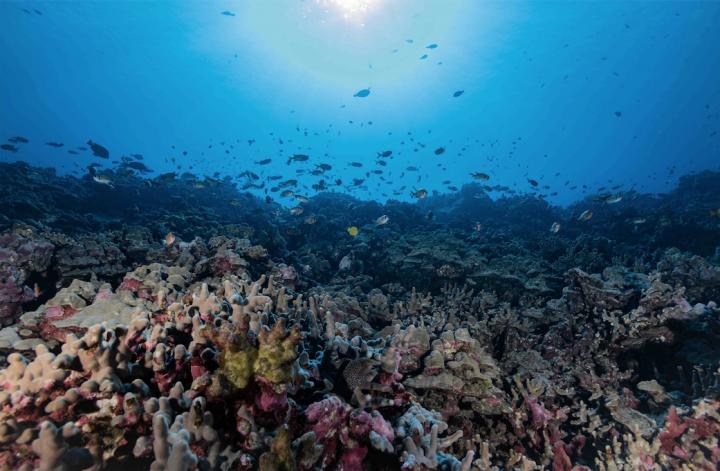Nearly 55 million gallons of sewage are threatening Hawaii’s coral reefs. Much of that pollution enters the ground each day, within just a few hundred yards of the coast and the 410,000 acres of life-supporting reefs that lie beyond it.
Exposure to sewage pollution can kill the reefs bringing bacteria, viruses, and nutrients that lead to the growth of reef-smothering algae. But, that’s not the only threat. Reefs are also threatened by human-caused climate change, ocean acidification, and plastic and agricultural pollution.
Now researchers say they’ve determined the scale of the threat, pinpointing contaminated locations and finding that sewage-contaminated groundwater is being delivered directly to some of West Hawaii Island’s most vulnerable reefs. They found that more than 40 percent of dozens of sites along 120 miles of coastline were contaminated by sewage.
“Itʻs concerning how many sites we tested were contaminated, but not surprising...” Kelly Hondula, an associate research scientist at Arizona State University, said in a statement.
Hondula and her team used sensors and special cameras installed on the university’s helicopter, took field samples, and used statistical models to determine where high levels of fecal bacteria tied to coastal areas were leading to exposure.
In 42 percent of the 47 sites that were sampled there were elevated levels of Enterococcus, the bacteria that helps researchers identify sewage contamination. And 23 percent exceeded health risk thresholds for humans, as well. Exposure to water that has been contaminated by sewage can also lead to viral, parasitic, and bacterial infections in humans, resulting in gastrointestinal and immune system issues.
The sampling also helped the researchers to determine the causes of the contamination, including inland sewage systems and urban development along the coast.
“The results are clear. The high number of cesspools and faulty wastewater systems, and amount of land development along the coast, are highly predictive of whether the water is contaminated,” said Hondula.
The South Kona region, which is known for its coffee and located 10 miles south of the town of Kailua-Kona on the Big Island’s west side, was especially vulnerable because of increased coastal development in the area and its volcanic land base, allowing sewage to travel quickly through the underground natural water system.

The area is also home to Kealakekua Bay State Historical Park, where green sea turtles and tropical fish thrive. Reefs around Hawaii support more than 7,000 known species of marine plants and animals, according to the University of Hawaii.
Going forward, the researchers say threatened ecosystems can be better protected through monitoring the health of the affected areas and mitigating sewage pollution there, implementing new green infrastructure and using new wastewater treatment systems.
“Restoration is not just about planting corals, it involves a spectrum of land management, reef interventions, and education effort,” Greg Asner, a professor and director of theʻĀkoʻakoʻa Reef Restoration Program who has conducted previous research in the area, said.







